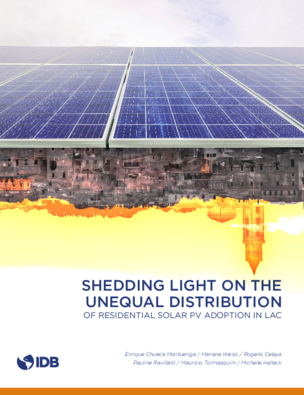Shedding Light on the Unequal Distribution of Residential Solar PV Adoption in Latin America and the Caribbean
Date
Dec 2020
Latin America and the Caribbean during the past decade have exponentially expanded their solar installed capacity, with a special emphasis on the rooftop solar photovoltaic systems in the households. These are potential results of incentive policies and regulatory instruments implemented in those countries to foster solar distributed generation. However, with the perspective of massive adoption of solar rooftop systems, the reinforcement of socioeconomic inequalities has been cited as a possible outcome of the current incentive policies. To improve and redesign policies in order to avoid this of distortions it is important to understand who the adopters are under the current institutional framework are and how the adoption of solar is taking place. This empirical analysis is presents evidence to look into whether the incentive policies ensure that solar generation can be adopted by many households and avoid being concentrated in a few early adopters of the technology. With this purpose it seeks to identify (i) the geospatial distribution of solar and (ii) how has the solar situation evolved since regulators permitted these installations in Mexico, Chile, and Brazil using socioeconomic data, electricity pricing, and the complete geolocated census of PV installations in these countries.




